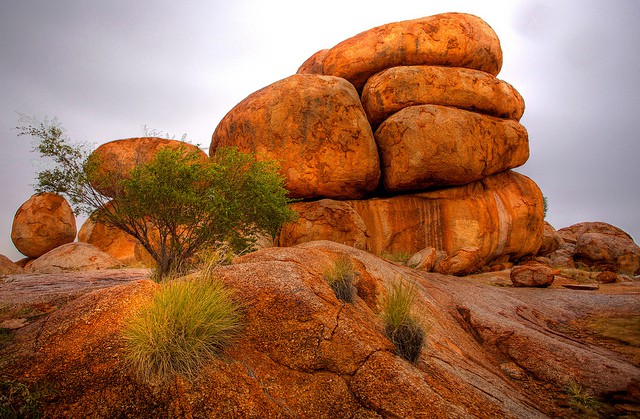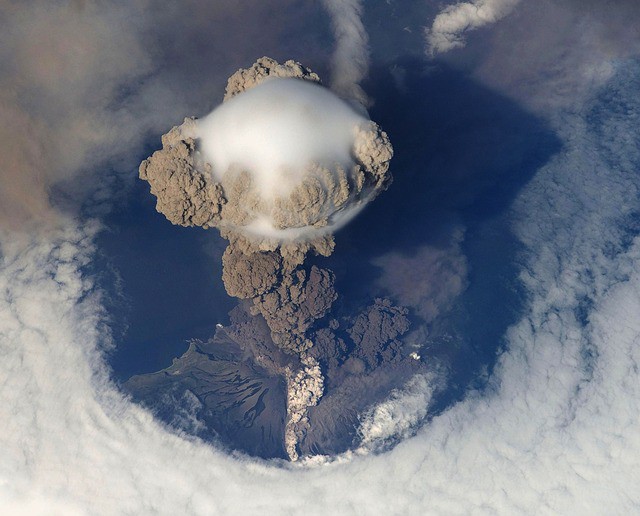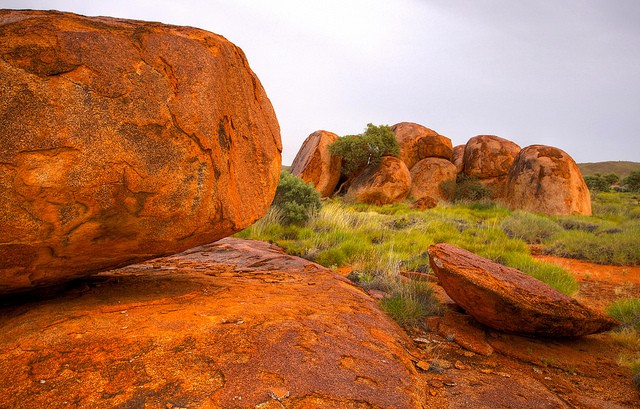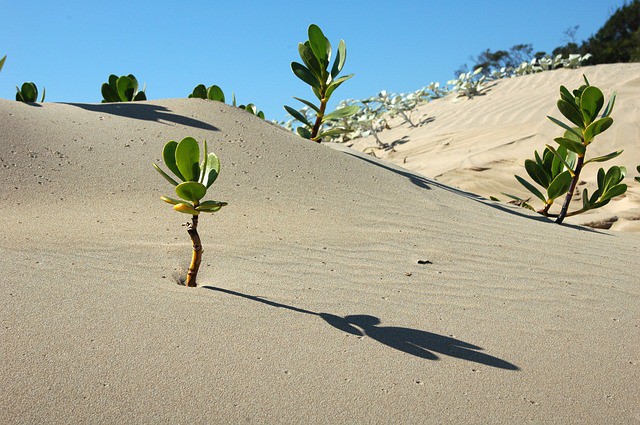Wind Erosion: Examples and Ways to Prevent it
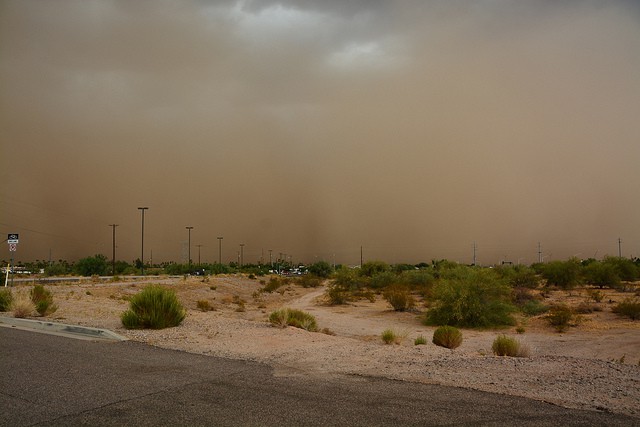
Wind erosion is a natural process where the soil is moved, carried, and transported by the force of the wind from one place to another. In order to be transported, the threshold velocity of the wind is needed. However, this depends on the size, weight, and wetness of the soil particles.
Soils are composed of different-sized particles: silt, clay, and sand. In order to be moved by the wind, each soil must need to be less than 1mm. The size of the silt particle ranges from 0.05-0.002mm, sand particle ranges from 2.00-0.05 mm and clay is less than 0.002 mm. The clay which has the least size, however, makes itself hard to be carried by the wind because of its ability to clump together with other particles. This makes the silt and sand be more susceptible to wind erosion.
In order for erosion to occur, a wind velocity must be 20 to 30 kilometers per hour. When threshold velocity is met, the particles are moved to the other place at a different height and transported at different distances. There are three ways at which the particles are being moved: suspension, saltation, and surface creep.
The suspension is the most identifiable movement of soil. It involves the fine dust particles, clay, or silt that are thrown into the atmosphere and may take days before being deposited. This kind of movement causes the soil particles to be transported to very long distances.
In a saltation process, sand-sized particles are carried by the wind by skipping and bouncing with great velocity while bumping to the ground and each other. Its horizontal velocity is four times than vertical velocity causing it to be more damaging compared to other movements.
On the other hand, surface creep as the name suggests involves the rolling and creeping of the soil particles on the surface. Particles are too heavy to be lifted by the wind thus they stay on the ground.
Though, wind erosion can be damaging especially to vegetation. The soil which is enriched with nutrients and microorganism will be carried away affecting the rich soils. Aside from that, following erosion is the process of deposition which affects not only vegetation but also landforms. People are using strategies to prevent such actions.
Examples of Wind Erosion
- Sand Dunes
According to this, A sand dune is a mount, hill or ridge of sand that lies behind the part of the beach affected by tides. They are formed over many years when windblown sand is trapped by beach grass or other stationary objects. Dune grasses anchor the dunes with their roots, holding them temporarily in place, while their leaves trap sand promoting dune expansion. Without vegetation, wind and waves regularly change the form and location of dunes. Dunes are not permanent structures.
- Rock Formations
According to Wikipedia, A rock formation is an isolated, scenic, or spectacular surface rock outcrop. Rock formations are usually the result of weathering and erosion sculpting the existing rock. These formations were created by wind erosion as the force of moving air swept through the terrain, wearing away the native rocks.
- Canyons
According to SoftSchools, The Grand Canyon is believed to have been formed over the course of millions of years by water erosion from the Colorado River, but theories have also cited wind erosion as a chief cause for the continuing erosion of the canyon’s walls far above the river level.
What is Wind Deposition?
After the wind erosion, the process of wind deposition occurs. Wind deposition is the geological process wherein soil particles or sediments are deposited and added to the mass of landforms. Deposition occurs when the wind force is no longer sufficient to further transport the particles due to several factors such as gravity, friction, or topographical obstacles (rocks, vegetation, and human-made Structures) that make the velocity of the wind to drop.
As the velocity of the wind slows down, the heaviest particles are deposited first. There are ways at which sediments are deposited. When the wind deposits sand particles, it creates a hill of sand called the sand dunes. Sand dunes are mainly found in the desert and sometimes on beaches.
However, when the wind deposits fine silts and clay particles, a deposit called loess is formed. Unlike the hilly sand dune, loess forms vertical cliffs that eventually become thick and rich soil. This type of deposit is used for farming and agriculture in many parts of the world. The types of deposits thus form according to the size of the particles deposited by the wind.
Ways to Prevent Wind Erosion and Deposition
Wind erosion and deposition have been creating a massive impact on land production. The loss of soil nutrients and the covering of the land with many deposits decrease the ability of the soil to properly produce drops. Since wind deposition follows the event of wind erosion, it is important to learn some ways to prevent wind erosion.
There are many ways and practices that are applied in order to either control wind erosion or make the soil highly resistant to it.
- Surface/crop residues
The surface and crop residues are important to lessen the effect of the wind on the surface of the ground. They protect the removal of soil particles and maintain the nutrients of the soil. When the residues are placed at a right angle where it is perpendicular to the existing wind, it reduces the wind erosion compared to a parallel position.
Flattened residues do conserve the soil however growing vertical residues makes double protection. After the harvest, and the soil is uncultivated, spreading straws, chaff, and any harvest residues is highly recommended. Others may include grass barriers, strips, and windbreakers.
- Permanent vegetation Cover
Another effective control of wind erosion is by growing permanent vegetation cover. This involves growing grasses, vines, shrubs, and trees, or legumes to erosion-prone areas. This practice is applicable especially to regions where conservation of soil is challenged. Its importance is considered in conserving not only soil but water, and air resources.
However, dependence on vegetation cover should not result in the removal or burning of the surface residues without a thorough understanding of the consequences of erosion control consequences. Permanent vegetation cover can be practiced through pasture and hay planting, conservation cover, and critical area planting.
- Surface roughening
When vegetation is not enough to control wind erosion, establishing stable aggregates helps to reduce the wind velocity. It is believed to be the only means to control wind erosion in large areas. Three ways are practiced for surface roughening: soil crusts, crosswind ridge, and clod-forming tillage.
The soil crusts increase the potential of the soil to resist the wind force, however, it may not be effective in controlling erosion relies upon it. However, the formation of crosswinds is achieved by tilling perpendicular to the prevailing wind. The tilling creates ridges and depressions that help alter the direction of the wind and stop the eroding of soil particles downwind.
This technique however has limited control of erosion, especially during unseasonal wind activity. On the other hand, the clod-forming tillage is enough to reduce the wind force and stop the moving particles. Its duration is dependent on the resistance of the clod against the graze of the wind and the wind direction. The larger the clod, the more stable it is to control the wind force and trap the eroding soil particles.
- Reshaping the land
Since the force of the wind increases as the surface gets hilly, so does the increase of the erosion. Reshaping the land by leveling the surface and shortening the empty is one way to lessen the potential of erosion. However, this technique may not be viable due to its costly system.
- Irrigation
It is one of the best ways to lessen the erosion of soil since the wind force finds it difficult to carry the soil particles on a wet surface. In a similar way, the wet surface retains the crop residues. However, this technique is normally impractical as the surface dries quickly and large irrigation may also affect the soil structure and lose the particles. Nevertheless, the greater damaging effect of the wind erosion would make irrigation as a practical solution to sufficient moisture the land.


